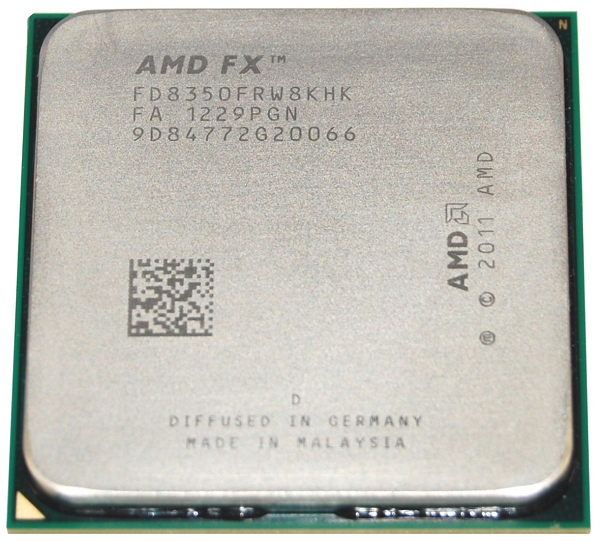Final Thoughts
Before giving our impression of the Piledriver FX series, let's rewind for a minute and recap what we had learned up to this point. When the original Bulldozer-based FX chips landed roughly a year ago, they offered no real performance advantage over the existing Phenom II parts, particularly in our gaming and encoding benchmarks. Likewise, there was virtually no improvement made in terms of efficiency, i.e. power consumption.
Fast forward to Trinity's release this month, and the Piledriver-based A10-5800K gave about the same performance clock for clock as 2011's A8-3850 Llano APU (not to be confused with the FX-3850 we're reviewing today). However, the A8-3850 doesn't use Bulldozer cores. It's based on the AMD Family 10h, or as it is commonly referred to, the K10 architecture, most popularly employed by the company's Phenom II processors.
So, from what we knew by comparing Trinity (Piledriver) to Llano (K10), it would've been be safe to assume that the Piledriver-based FX processors wouldn't be any faster than their Bulldozer counterparts. Again, if Piledriver Trinity APUs weren't much faster than Llano APUs, which are based on older technology than Bulldozer, it would be odd to expect Piledriver FX CPUs to be much faster than Bulldozer FX CPUs, right?
Unfortunately, that appears to be true. Besides WinRAR and Fritz Chess, the FX-8350 was at most 6% faster than the FX-8150 in all of our tests, despite being clocked 11% faster (though we should keep in mind that both chips have a max turbo frequency of 4.2GHz). Similar results were seen when comparing the FX-6300 and FX-6100, though the margins were even slimmer here as the Piledriver chip is only clocked 6% higher.
Honestly, despite what we saw with Trinity, we still expected more of the new FX series. Unfortunately, we only had two days to test these new processors, which obviously isn't a lot of time, and much of it was spent trying to determine if there was an issue with our test bed. Nonetheless, we logged consistent results and have no reason to doubt them, despite AMD's press material claiming up to 23% more performance.

Granted, "up to" clearly indicates the highest possible speed gain, not the average improvement. With that in mind, we scanned through AMD's data comparing the FX-8350 to the FX-8150 and we found only one test that showed a large performance gap. Piledriver offered a 21% boost over Bulldozer in 3Dmark Vantage's AI Test. That's still 2% lower than the supposed maximum gain of 23%, but it's at least pretty close.
For the heck of it, we went a step further and compiled data from 130 benchmarks run by AMD across 20 different games. The company's own results show the FX-3850 to be about 5.5% faster than its Bulldozer-based predecessor on average. Despite that relatively minimal improvement, the updated FX series could still provide some degree of competition if AMD is willing to offer the chips at appropriately low prices.
The new FX-8350 will begin selling at just $200, which is the same price as the Core i5-3470, while the FX-6300 will cost just $135, considerably cheaper than the most affordable Ivy Bridge Core i5 processor. In fact, it is also much cheaper than the most affordable Sandy Bridge Core i5 chip, the i5-2300, which costs $187. The FX-6300 will cost just a fraction more than the Core i3-3220 ($130), which was included in this review.
The FX-8350 was 7% faster than the i5-3470 in our synthetic tests, 13% faster in applications, 7% slower with encoding and 3% slower when gaming. That's 2.5% faster overall. Meanwhile, the FX-6300 was 17% faster than the i3-3220 in synthetic benchmarks, 44% in application tests, 30% faster in encoding benches and just 2% slower when measuring gaming performance. That's an average of 22% faster than the i3-3220.
With AMD's aggressive pricing, the updated FX series isn't necessarily in an indefensible position against Ivy Bridge when purely comparing speed and price, but it's not exactly an open and shut case either. The FX-6300 may offer 22% more performance than the i3-3220 for about the same price, but our Piledriver-powered test rig also consumed around 86% more power than the Ivy Bridge machine (227 watts versus 116 watts).
The bottom line is that the Piledriver FX series provides a quick, affordable upgrade for folks still using lower-end K10 hardware, but there isn't a lot to see for those running high-end Phenom II X4 and X6 processors, regardless of how cheap the new parts may be. For those building a fresh rig from scratch, Ivy Bridge will likely still be more attractive thanks to its superior single thread performance and efficiency.
score
Pros: Supported by the existing Socket AM3+ and 9xx series chipsets. Aggressive pricing.
Cons: Minimal improvement over Bulldozer-based FX chips. Not nearly as efficient as comparable Ivy Bridge chips.
